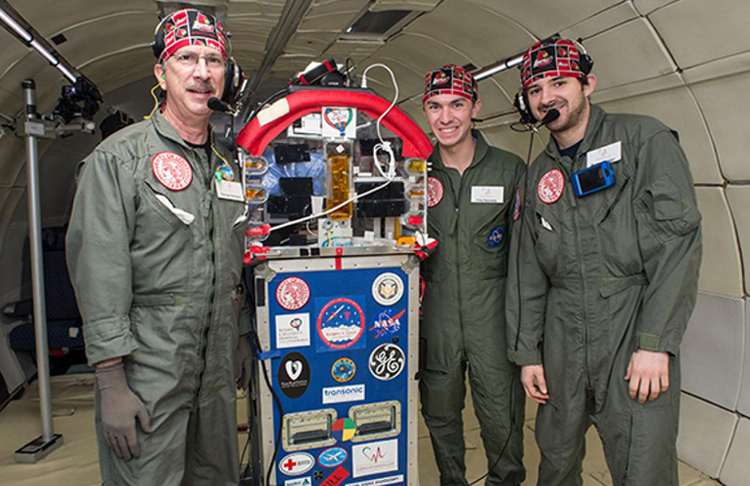See how Transonic’s flow measurement solutions can be used in your next research application. Contact our research team for more information.


Astronauts have many challenges in the zero gravity environment of space. What are simple tasks on Earth have to become carefully choreographed operations in zero gravity. And, when you’ve got limited access to resources, and the inability to make an emergency trip back to Earth, what do you do if you need to perform a task like emergency surgery in space?
While an emergency trip to Earth is not possible on extended space flights like those on board the ISS, there are innovations happening to making astro surgery possible. Dr. George Pantalos, Professor of Cardiovascular & Thoracic Surgery, Professor of Bioengineering at the University of Lousville’s Cardiovascular Innovation Institute and his students have been working on ways to allow astronauts to be able to perform simple surgical tasks on a space flight.
“If you need to do a rapid fluid resuscitation of an astronaut for some reason, how would you get a sufficient amount of intravenous fluid into them? My students and I did a project where we looked at the infusion flow rate from a one-liter bag of fluid and we were able to simulate the hydrostatic pressure and then Martian gravity and lunar gravity and then zero gravity,” he said.
“We've got some good ideas on how to do visualization and some ideas on how to do cauterization, but we haven't implemented it yet,” he said. “In developing other aspects of the system, when we've been doing flights on the zero-G airplane, we've been using a Transonic clamp-on flowprobe to make sure that we're getting adequate flow rates, in this case with the fluid that we're using, filling a containment dome over at the surgical site.”
These Flowsensors clip onto the outside of flexible tubing to measure the flow within. They have become the standard for OEM medical design and preclinical extracorporeal use by providing measurements with high accuracy and stability. The non-invasive clamp-on design allows the fluid to be measured without direct contact which is helpful when sterility is a concern or where breaking the tubing circuit would be problematic.

Measurements are reliable even in challenging electromagnetic environments. The easy clip-on operation of the PXL Flowsensors also make these sensors ideal for industrial flow measurement applications when process testing must be quick, repeatable and applied to multiple circuits without flow interruption.
PXN Inline Flowsensors are flow-through sensors with a smooth, cylindrical interior. These Flowsensors offer more flexibility over clamp-on sensors as measurement calibration doesn’t depend on the type and exact size of tubing on which they are used. Direct contact with the fluid allows for very high accuracy at super low flow rates. Small diameter PXN Inlines are ideal for low flow isolated heart or perfused organ studies.

See how Transonic’s flow measurement solutions can be used in your next research application. Contact our research team for more information.